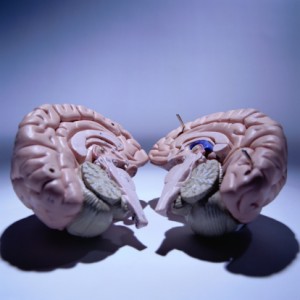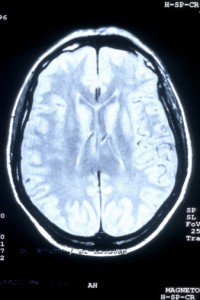The Executive System: Cognitive Science and Kabbalah (Part 1)
By Asher Crispe: March 13, 2012: Category Inspirations, Quilt of Translations
—The Pixies
Everyone deserves a holiday—even neuroscientists. In the Hebrew calendar, we have a particularly popular one reserved for them. Commonly know as Rosh Hashanah, the Jewish new year actually translates as the head (Rosh) of the year. It is as if each year has a human-like identity that ‘incorporates’ time. As a result, the relationship of Rosh Hashanah to the rest of the days of the year is like the relationship of a head to a body. The holiday itself serves as the consciousness of the entire year. It serves as the command center—the central nervous system—relaying back and forth to each unique day or organ of time as part of the temporal body.
As in English, the Hebrew word for “head” captures the dual sense of being the physical head as well as being the leader as in the ‘head of the company’. Thus executive leadership is itself another aspect of the Hebrew word Rosh. This is a holiday for acknowledging God’s kingship over the world. It is about (re)installing and upgrading an executive system for the world and for each of us personally. It is about establishing a head and distinguishing what constitutes a head. The praxis of the day explores the structures and functions of the head, and programs how the head will conduct the year or lead the body.
In Kabbalah we learn that there exists an extensive parallelism between exterior and interior reality. If this holiday enjoins us to identify an executor or King of the Universe, then it would likewise make sense to do the same for our mental world as well. The same features find new iteration on all scales according to Kabbalah. Head to body, Rosh Hashanah to the rest of the year, God to all of Creation and my brain to my body more or less sums up the inventory of relations. This line of interpretation has one more fold to contend with: what of the brain to itself? We might suggest that there is a ‘body’ of brain function which is ruled over by a ‘head within the head’ or some sort of internal system of control.
Cognitive psychology does entertain such a notion. As the theorized system that is generally associated with the prefrontal areas of the frontal lobe, executive function refers to the internal manager of our cognitive processes granting us the ability to plan, prioritize, pay attention and monitor our own actions, amongst other things.
The executive system also plays a critical role in working memory so we should also note in our extended comparison that Rosh Hashanah has a number of aliases and is sometimes known as Yom Hazikaron or the Day of Remembrance. Perhaps we could call it the day of memory or the consciousness (head) of memory or even the beginning of memory.
If we assign a role to an executor to monitor and direct our mental tasks, would it not follow that we could unitize this arrangement to administer changes in our head just as we would petition for improvements in our lot of the year to come? The answer lies in the word for “year” itself. According to the great rabbinic commentators such as the Radak (1160-1235), shanah stems from the same root as the word shenui which means “change.” Thus the New Year could be re-read as the head or consciousness of change or alternatively as the change of mind.
Volumes of new research have come to light in recent years, exposing the magnificent degree of neuroplasticity in the brain. Older notions of rigid hard wiring of the brain are rapidly caving under a mountain of evidence to the contrary. We are constantly rewiring our brains. Behavioral and environmental changes can result in physiological changes. New inputs can generate new outputs.
In the same vein, we might include teaching, studying and even repetition as additional definitions of shanah. Thus, we are talking about a focal time for the study of cognitive transformation. As part of the pattern of creation, we are obliged to observe this study at regular intervals.
While our well-trodden thought patterns create strong links within our neural network, suggesting that our thinking and perception are conditioned by those existing connections, we can nevertheless witness in real-time how new thoughts can grow new connections as our neural architecture is remodeled throughout life. The circularity of the statement ‘I am my thoughts and my thought are me’ coupled with the physiological manifestation of this arrangement in terms of neurons and synapses carries another prized possibility: ‘I am determined by my brain but I can also determine my brain.’ Our internal cognitive suite comes with read/write capabilities. More profoundly we can re-write and edit.
All of these capacities are built into Talmudic notions about Rosh Hashanah, a holiday which we will now dub the holiday celebrating neuroplasticity with all of the appropriate echos for the human, global and cosmic brains. The sages depict this time as an occasion for books to be opened wherein the record of the last year is revised and entered into memory (a kind of yearbook printing) and a new chapter is begun (or at least a table of contents) for the following year.
Practitioners customarily greet one another at this time with exclamations such as: ‘may you be inscribed and sealed for a good and sweet new year.’ If this were to be the voice inside my head, it would be that of a motivational speaker whipping me into shape or encouraging me to make beneficial changes in my life by making positive changes in my thinking, to adopt a new consciousness of a new world which I am invited to co-create. The cycle of the year with all of its seasons can be regarded as a transfiguration of consciousness plasticized in the confluence of old and new.
The enigma of the human mind has served as an object of fascination throughout the ages. Taken from the perspective of cognitive psychology, the basic phenomena of consciousness seems to be rooted in a fundamental interplay of basic structural features of the brain. While there are many ways of breaking it down, the most general division of the brain is into what has been famously called the bicameral mind.
Reflecting the ‘two chamberedness’ of the brain, Bicameralism, as coined and popularized by psychologist Julian Jaynes, has been given extensive treatment in a recent book by Iain McGilchrist called The Master and His Emissary: The Divided Brain and the Making of the Western World. While regionalism and site-specificity in the study of the brain reveals many of the subtle textures of cognition, McGilchrist and others still insist that the brain, viewed from the standpoint of this generalized primal division, can sustain a unique conversation about historical trends effecting the makeup of the human psyche.
While many competing models of the brain may be found and contextualized within Jewish mystical literature, to find the lateralization of the brain into left and right hemispheres we need look no further than our previous example of Rosh Hashanah. One of the peculiar features of this holiday is that it is comprised of two days which are counted as one. Sometimes it is referred to as yoma arichta in Jewish law or ‘one long day’ consisting of 48 hours. This extraordinary day, the head of the year, institutes a model for two days which are nonetheless regarded as one.
As with many of the perceived variations from expectation in Jewish text and tradition, this anomaly of the ‘two days as one,’ shelters enduring significance for our exchange on cognitive psychology. Since the long day is called the ‘head’ and its most basic logical division is into two 24-hour periods, it thereby suggests that the head itself has two fundamental regions. Moreover, since this long day has 48 hours it is worth noting that this hints at the Hebrew word for brain ‘moach’ [מח] which numerically equals 48 when its letters are transposed into numbers.
This is exactly what the kabbalists say about these two days which are one. They represent wisdom (chochmah) and understanding (binah) which are the right and left hemispheres of the brain respectfully. While the standard cognitive model in Kabbalah involves a triadic arrangement with the inclusion of knowledge (da’at) as the absent third element, we find that this term is often only used to connote the relationship between the first two or the product of that relationship. Together these terms form a family with the union of wisdom and understanding, right and left, father and mother, generating new states of consciousness or perception as its offspring.
 While many of the activities—liturgical or otherwise—are the same for both days of the long day of Rosh Hashanah, there is abundant evidence of symmetry breaking. Each 24-hour period has customs and observances that are specific to it. Likewise, the fusion of the two hemispheres of the brain, which are meant to work together, also underscore a positive tension between them which, under certain circumstances, can escalate into imbalances and antagonization.
While many of the activities—liturgical or otherwise—are the same for both days of the long day of Rosh Hashanah, there is abundant evidence of symmetry breaking. Each 24-hour period has customs and observances that are specific to it. Likewise, the fusion of the two hemispheres of the brain, which are meant to work together, also underscore a positive tension between them which, under certain circumstances, can escalate into imbalances and antagonization.
The details of this right-left relationship, which is likened kabbalistically to a marriage, will be taken up in part two of our series….
The Executive System: Cognitive Science and Kabbalah (Part 1),















;)
;)
;)
;)
;)
;)
;)
;)
;)
;)
